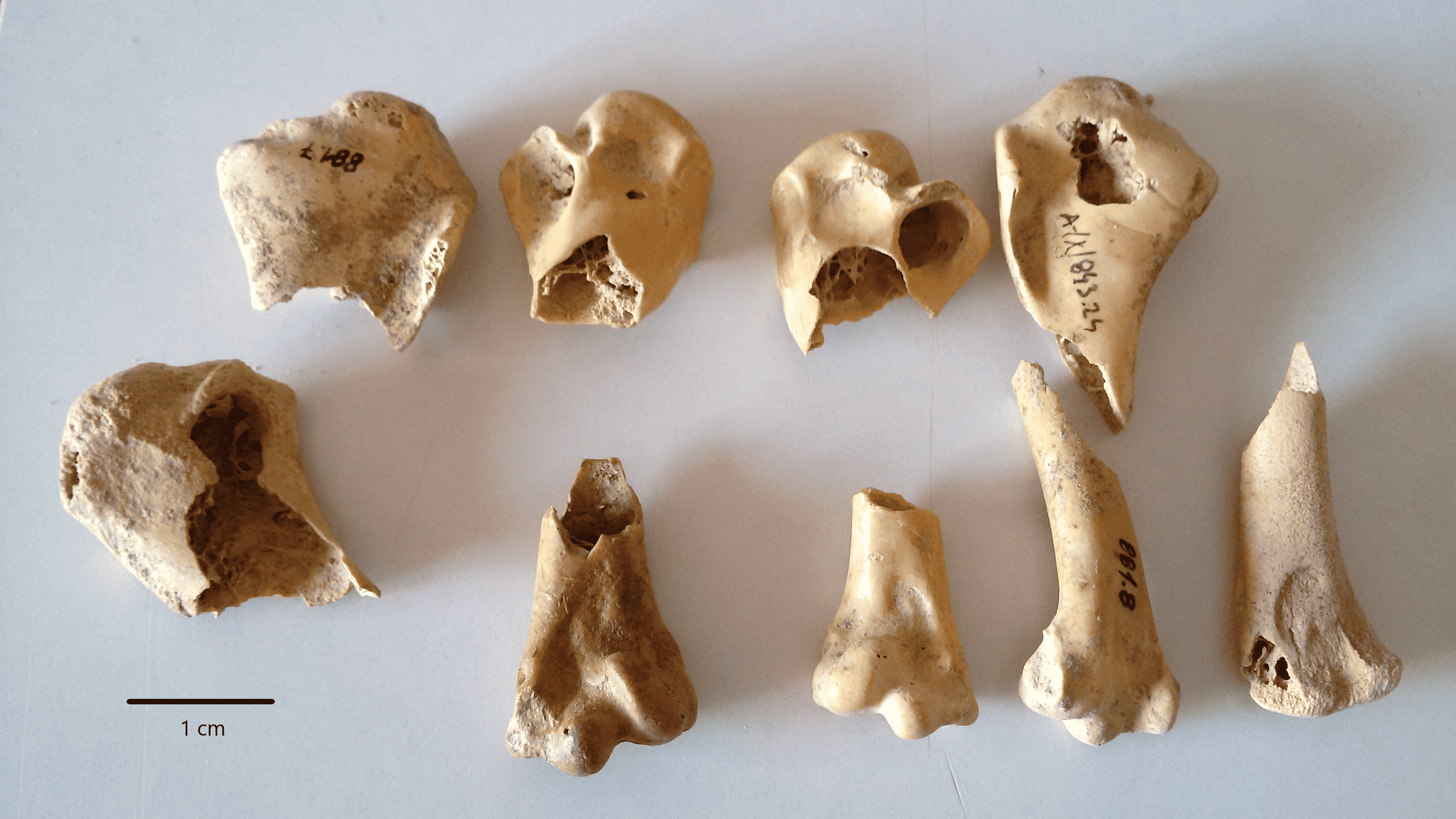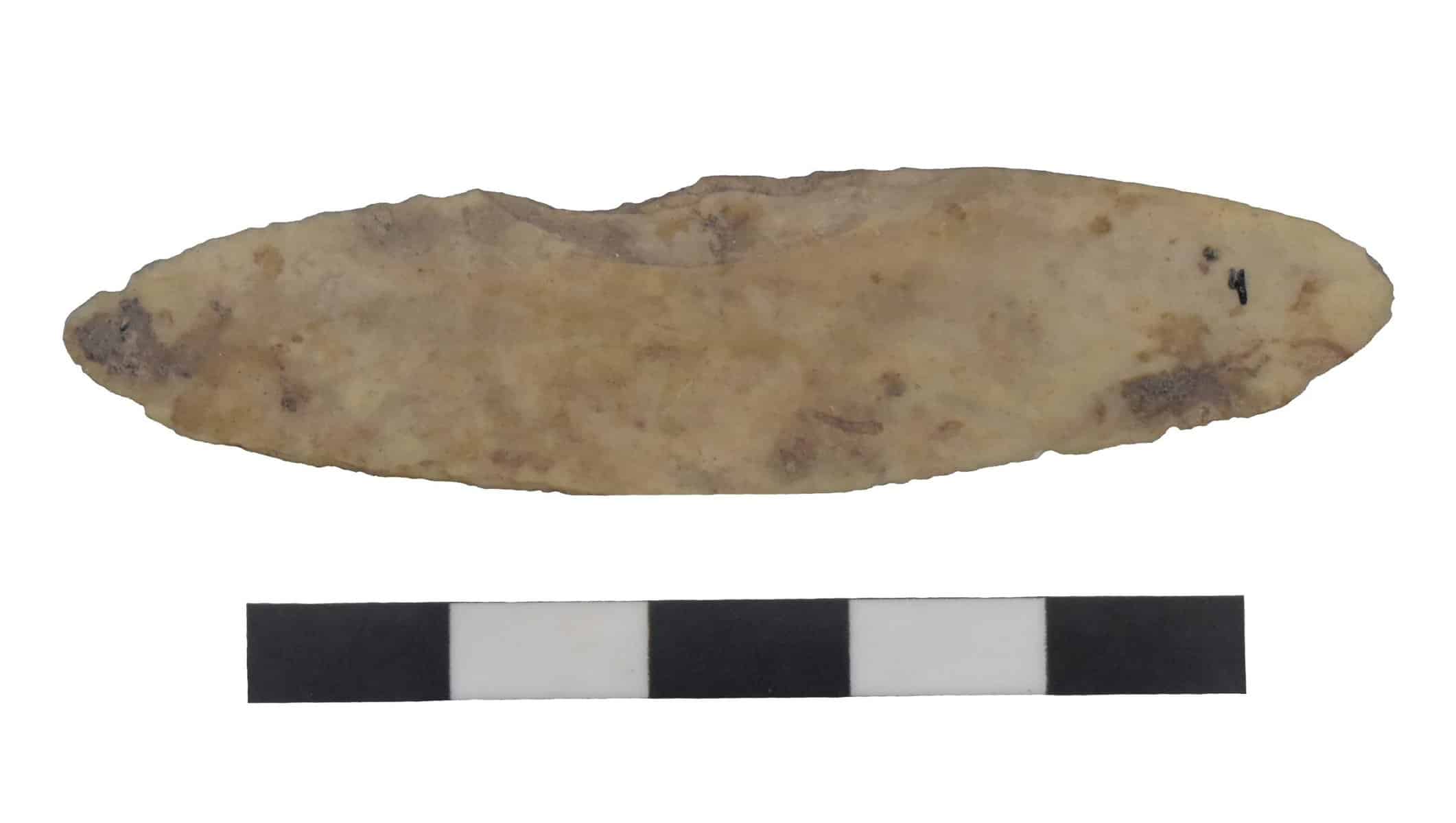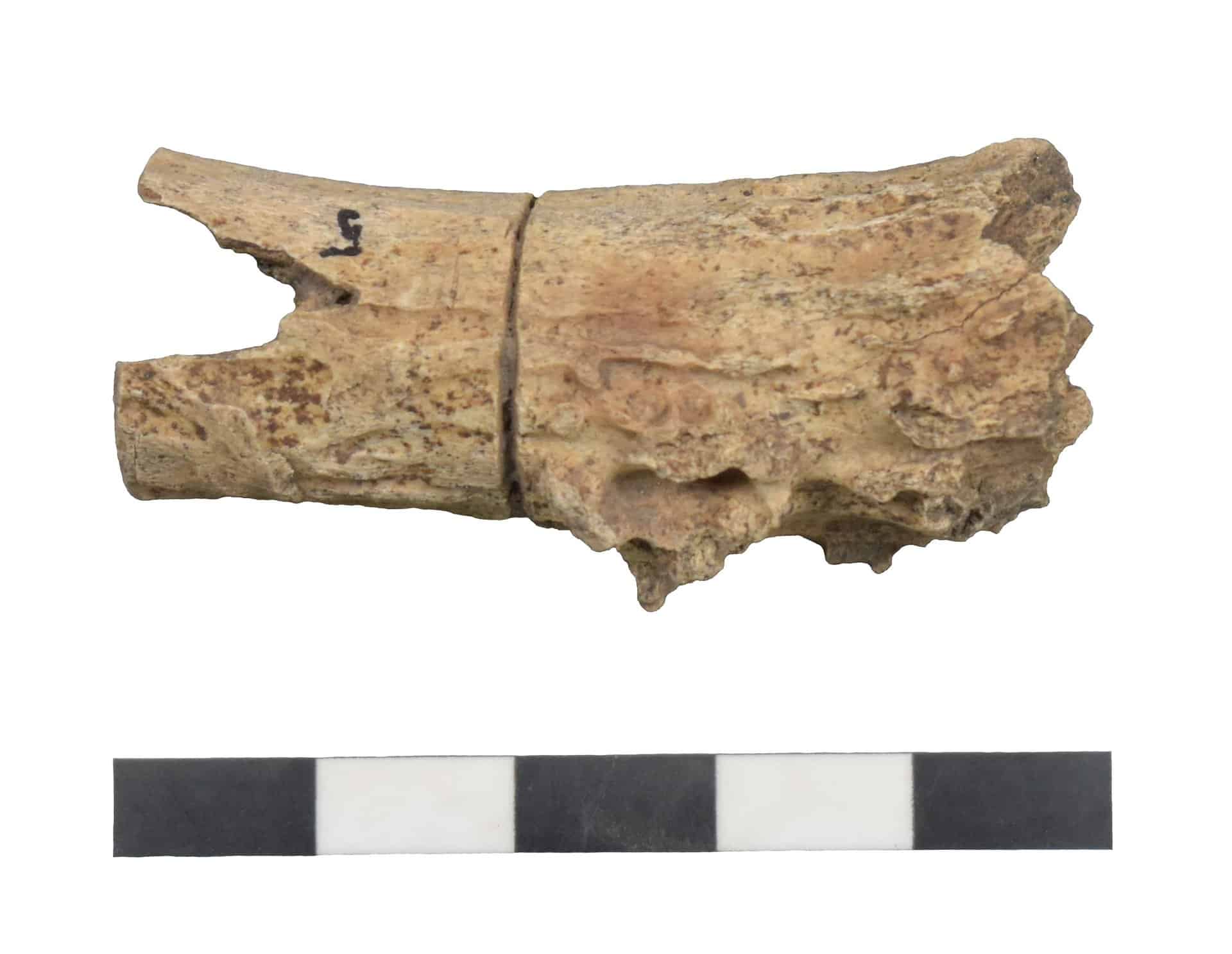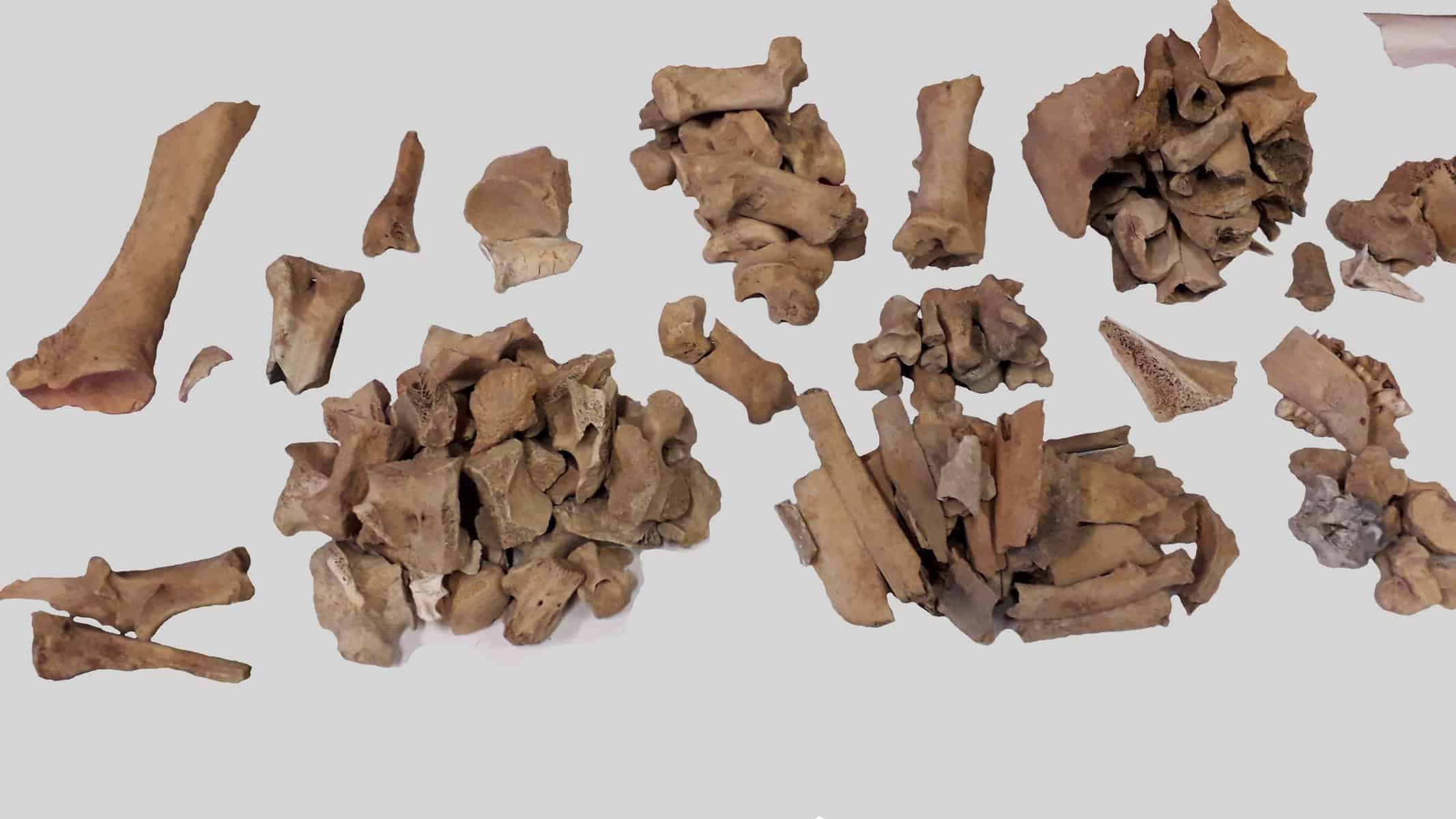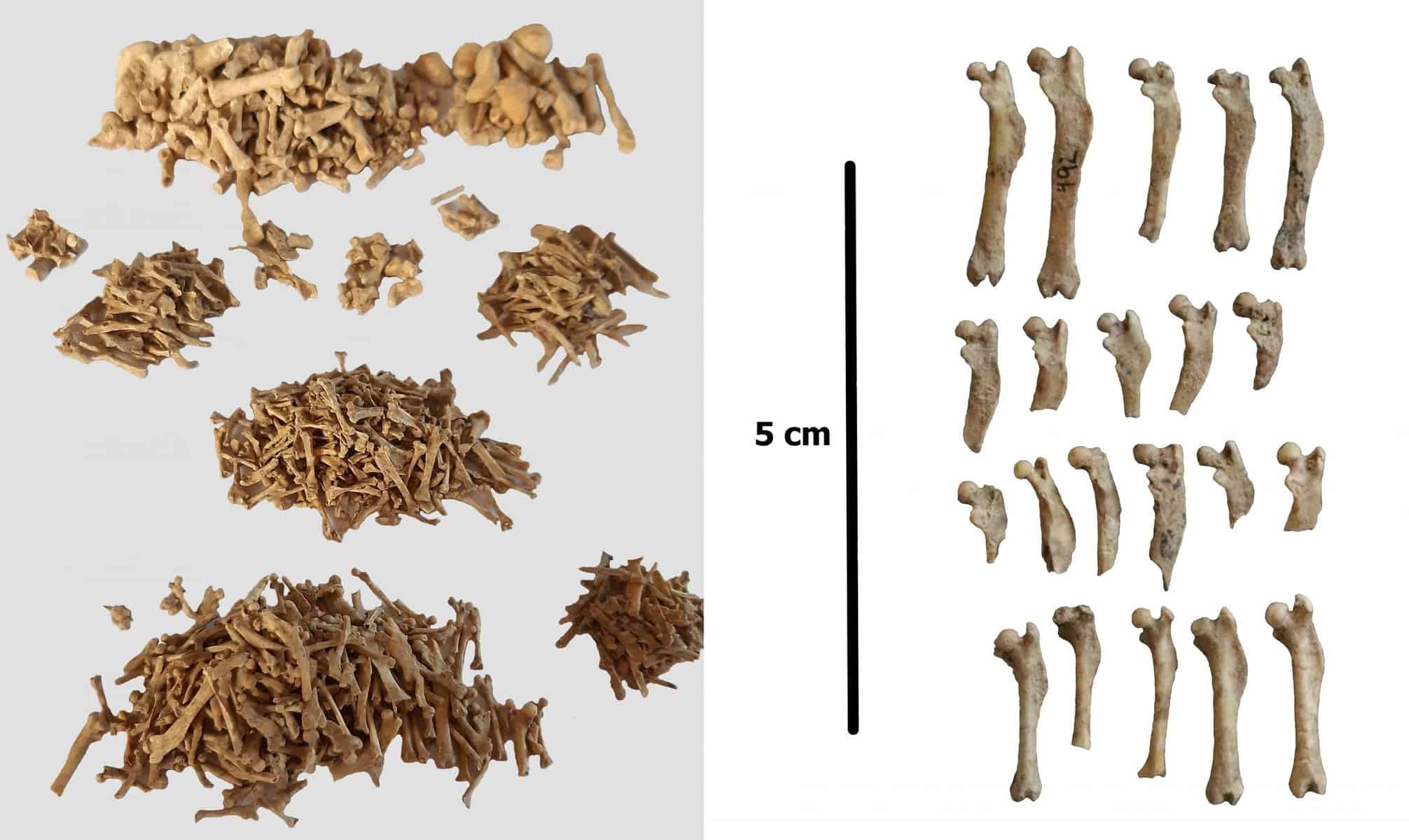We provide analyses of osteological zoological material from archaeological and palaeontological (Quaternary) sites.
Archaeozoology focuses on the study of animal remains (e.g., bones, teeth, horn, mollusk shells, etc.) associated with archaeological situations to address issues of human-animal relationships and their environment. This often involves studying the biology and ecology of the animals themselves. Archaeozoological analyses cover topics ranging from human and animal nutrition, resource use, economics, prey selection, processes of intensification and domestication, herd management, breed development, gender, urbanization, colonization, society, ideologies, rituals, biogeography of species, adaptation, environment, climate, and others. This broad spectrum of research questions reflects the complex and intense relationship between animals and humans throughout human history.
Our archaeozoological research includes the identification, analysis, and interpretation of osteological zoological finds. Identification involves collecting primary data (e.g., anatomical and species identification of the bones, description of any changes and pathologies observed on the bones, sex and age determination, biometrics and taphonomy, if the state of preservation of the bone/bone fragment allows). The result of primary data analysis is secondary data, including the number of identified specimens (NISP) and the minimum number of individuals (MNI); data on height at the withers, age profiles, sex ratios, or the relative abundance of species in individual sets. Primary and secondary data together form the basis for subsequent interpretations, aiming, for example, to provide insight into the subsistence strategy of people in the past, contribute to the knowledge of domestication, the availability of animal products in space and time, and compare with related localities within the Czech Republic and/or Central Europe.
The results of archaeozoological analyses are submitted, depending on the agreement, in electronic form or in the form of a printed report with an attached CD. If interested, it is also possible to participate in the scientific publication of the results.
The time range of archaeozoological analyses of animal osteological material stated below is only indicative and largely depends on the content of a specific osteological collection and its state of preservation.
Standard, handpicked archaeozoological material (banana box):
-
- Acquisition of primary and secondary data: 20-32 hours
- Interpretation of obtained data and report preparation: 16-32 hours
Floated archaeozoological material (banana box):
-
- Acquisition of primary and secondary data: 40-64 hours
- Interpretation of obtained data and report preparation: 16-32 hours
Quaternary paleoecological material (sample):
-
- Acquisition of primary and secondary data: 4-24 hours
- Interpretation of obtained data and report preparation: 16-32 hours

